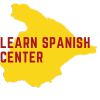Are you ready to embark on a journey of language mastery? Look no further than these best books for learning Spanish.
With essential grammar guides, conversational Spanish books, and interactive workbooks, you’ll have all the tools you need to become fluent.
Expand your vocabulary with engaging resources and dive into captivating Spanish short stories and novels.
Get ready to immerse yourself in a world of language and watch your understanding soar.
Let’s begin this adventure together!
Key Takeaways
- ‘Spanish Conversation Made Simple,’ ‘Conversational Spanish Dialogues,’ and ‘Fluent in Spanish: The Complete Language Course’ are recommended books for improving conversational Spanish skills.
- Flashcard apps like Quizlet and Anki, online language courses, and vocabulary lists on language learning websites are useful tools for building vocabulary in Spanish.
- Reading in Spanish, including classic works of literature and contemporary novels, helps improve vocabulary, grammar, and cultural understanding.
- Interactive workbooks and exercises provide hands-on learning and targeted practice for strengthening specific language skills, with immediate feedback for identifying and correcting mistakes.
Essential Grammar Guides
You should check out some essential grammar guides for improving your Spanish skills.
Mastering verb conjugation is crucial in becoming fluent in Spanish. These guides will provide you with detailed explanations and examples of how to correctly conjugate verbs in different tenses and moods. They’ll also help you understand the rules and exceptions associated with each verb group.
Additionally, these guides will break down sentence structures, allowing you to construct grammatically correct sentences with ease. You’ll learn about subject-verb agreement, pronoun placement, and the use of adjectives and adverbs.
Conversational Spanish Books
If you’re looking to improve your conversational Spanish skills, now is the perfect time to explore some engaging and interactive conversational Spanish books. These books not only provide you with useful vocabulary and grammar, but also help you practice common phrases for everyday conversations. To enhance your learning experience, here are some tips for improving pronunciation:
-
Listen to native speakers: Immerse yourself in the language by listening to Spanish podcasts, music, or watching movies with subtitles.
-
Practice with a language partner: Find a native Spanish speaker to practice conversations with. This will help you improve your pronunciation and fluency.
-
Use pronunciation exercises: There are plenty of online resources and apps that offer pronunciation exercises. These can help you perfect your pronunciation of difficult sounds in Spanish.
By incorporating these tips and using conversational Spanish books, you’ll be well on your way to becoming a confident Spanish speaker. Happy learning!
| Books for Conversational Spanish |
|---|
| 1. "Spanish Conversation Made Simple" |
| 2. "Conversational Spanish Dialogues" |
| 3. "Fluent in Spanish: The Complete Language Course" |
Vocabulary Building Resources
Check out these online vocabulary-building resources to expand your Spanish word bank and improve your language skills.
One popular option is flashcard apps, which offer a fun and interactive way to learn new words. Apps like Quizlet and Anki allow you to create your own flashcards or choose from pre-made decks. With features like spaced repetition, these apps help you review words at optimal intervals for long-term retention.
Another option is online language courses, which often include vocabulary-building exercises. Platforms like Duolingo and Babbel offer structured lessons that gradually introduce new words and reinforce them through various exercises.
Additionally, many language learning websites provide vocabulary lists and quizzes for targeted practice.
Spanish Short Stories and Novels
Have you read any of your favorite Spanish short stories and novels recently? If not, you might want to consider picking up some Spanish literature recommendations.
Reading in Spanish can greatly benefit your language learning journey. Not only does it improve your vocabulary, but it also helps you understand grammar and sentence structure in context. By immersing yourself in the language through reading, you can develop a better understanding of the nuances and cultural aspects of Spanish.
Additionally, reading in Spanish allows you to see the language used in various genres and writing styles, expanding your knowledge and appreciation of the language. So, whether you choose to read classic works of literature or contemporary novels, diving into Spanish short stories and novels is a valuable tool for language learning.
Interactive Workbooks and Exercises
You should try using interactive workbooks and exercises to enhance your Spanish learning experience. Interactive practice is an effective way to actively engage with the language and reinforce your understanding of vocabulary, grammar, and pronunciation. Language exercises provide the opportunity to apply what you’ve learned in a practical context, helping you develop fluency and confidence in speaking and writing.
Here are three reasons why interactive workbooks and exercises are beneficial:
-
Hands-on Learning: Interactive activities allow you to actively participate in the learning process, making it more engaging and memorable.
-
Targeted Practice: Workbooks and exercises provide focused practice on specific language skills, allowing you to strengthen areas where you may need more practice.
-
Immediate Feedback: Many interactive resources offer instant feedback, allowing you to identify and correct mistakes in real-time, enhancing your learning progress.
Frequently Asked Questions
Are There Any Audio Resources Included in the Essential Grammar Guides Section to Help With Pronunciation?
Yes, there are audio resources included in the essential grammar guides section. These resources are effective methods for learning Spanish pronunciation. They provide a helpful tool for practicing and improving your pronunciation skills.
Do the Conversational Spanish Books Focus on Specific Topics or Cover a Wide Range of Everyday Conversations?
The conversational Spanish books cover a wide range of everyday conversations, including specific topics. They are designed to help you practice and improve your speaking skills in various real-life situations.
Are the Vocabulary Building Resources Suitable for Beginners or Are They More Advanced?
The vocabulary building resources vary in difficulty. Some are beginner-friendly, while others are more advanced. It’s important to choose materials that align with your current level of Spanish proficiency to ensure effective learning.
Can You Recommend Any Spanish Short Stories and Novels That Are Suitable for Children or Young Adults?
Looking for Spanish short stories for beginners or novels for young adults? There are plenty of options to choose from. Let me recommend some engaging and age-appropriate titles that will help you improve your Spanish skills.
Do the Interactive Workbooks and Exercises Include Answer Keys for Self-Study Purposes?
Yes, the interactive workbooks and exercises in the recommended books for learning Spanish do include answer keys for self-study purposes. Additionally, they often provide audio resources to help with pronunciation.
Conclusion
In conclusion, the best books for learning Spanish offer a comprehensive approach that encompasses essential grammar guides, conversational Spanish books, vocabulary building resources, and even interactive workbooks and exercises.
These resources provide a solid foundation for language learners to enhance their skills and fluency.
As the saying goes, ‘Rome wasn’t built in a day,’ and acquiring a new language takes time and dedication.
By utilizing these recommended books, learners can embark on a rewarding journey towards mastering Spanish.






